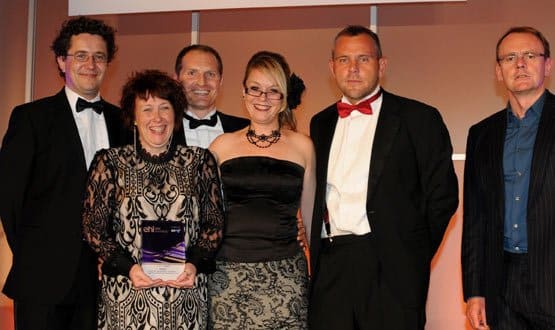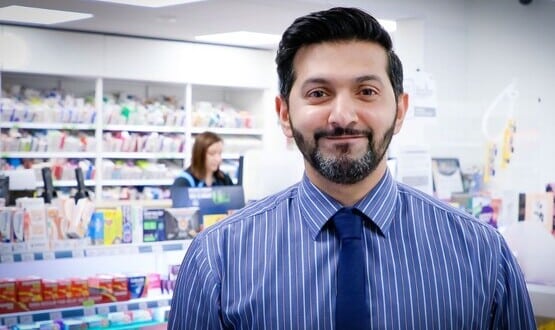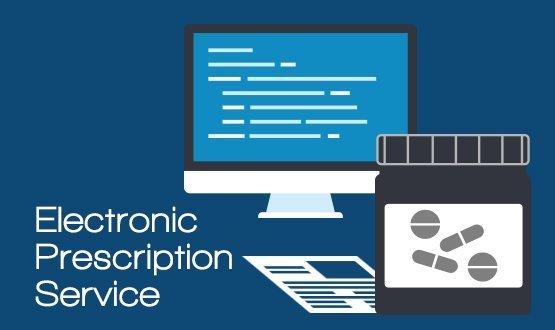EHI Awards 2011: Pen pushers
- 31 January 2012

The birth rate in Portsmouth has been increasing by 20% a year; which means that Portsmouth Hospitals NHS Foundation Trust’s midwifery unit has seen a huge increase in workload.
Since that came at a time when the trust was being urged to make significant efficiency savings, it was faced with a dilemma. How could it continue to provide care for all those extras mothers without increasing expenditure but, in fact, reducing it?
Part of the answer was, in hindsight, obvious. The unit’s processes, which had become routine, involved its midwives in writing out three separate sets of notes and then driving back to the hospital to manually enter the information into its maternity system. There were time and cost savings to be had in reducing that duplication.
Spotting a good idea
At the time, Richard Sargent was working in the trust’s ICT team and rifling through contracts trying desperately to find ways to save the trust money. And that’s when he ‘stumbled’ across the digital pen.
“The air carrier delivery guy came in with his digital pen and, of course, I was taking the mickey out of the size of it, because it is a little bit bigger than your average pen,” he says.
But once he had seen the capabilities of the device he immediately took it out to the midwives for consideration. Systems involving laptops and iPads were also proposed, but the midwives found them too intrusive, Sargent says.
Instead, because the midwifery team was already using BlackBerry smartphones, a small scale pilot was put together with digital pens from DevelopIQ in conjunction with the BlackBerry devices.
The resulting system works like this: a midwife carries specifically printed form, on which they write just as they would with an ordinary pen.
The difference is that the digital pen takes snapshots of the information, converts this into an encrypted format, then sends this code to the midwife’s BlackBerry via Bluetooth.
That information is then sent back to the hospital over the mobile carrier network. If a midwife doesn’t have service immediately, the files will be sent back to the hospital as soon as the smallest amount of signal is picked up. An email will also be sent to the midwife letting them know the information has been sent successfully.
From three forms to one
Sargent says the system has overcome the significant issue of duplication. Whereas midwives previously filled out a form for the patient, a form for the hospital, and entered details into a diary, now they only have to fill out the one form.
This has been a benefit for the midwifery team, because midwives “want to be providing care, not filling out forms,” Sargent says. But the system has also cut the amount of time midwives have to spend travelling to and from their base and the amount of time they spend inputting data
It has also streamlined processes within the hospital, since the information is automatically fed into different systems. The information is initially populates the hospital’s iSoft Evolution 3.8 maternity system. But it is also being fed into Graphnet, and the trust’s business intelligence software.
One way and another, the amount of time it takes a midwife to complete an ‘episode’ – or patient visit with associated paperwork – has halved with the introduction of the digital pens.
“Rather than the trust having to employ more staff, the midwives are actually just able to see more patients,” Sargent says. Indeed, the savings work out at the equivalent of six full-time midwives, or £220,000 per year based on a workforce of 130.
Finally, the system has delivered security benefits. The midwives used to have the responsibility of carrying around a diary with information about 100 to 120 patients in it. But the digital pen system has reduced the risk of that information falling into the wrong hands.
“If a pen or a BlackBerry went missing, nobody would be able to get hold of that information that is contained or any activity of care because it’s all in code,” Sargent says.
The success of the system is now being extended with the introduction of security features such as lone worker; which means that if a midwife is in trouble they can simply press a button and request their line manager to call them.
Alternatively, they can put a request straight through to the police – and DevelopIQ is advocating the introduction of a GPS locator.
The midwives are also able to use satellite navigation – which saves time that might be spent simply looking for a client’s home and getting lost – and have constant access to their emails and calendars.
Pens for A&E
The actual digitisation of the midwifery forms was the most significant part of the undertaking, as 98 pages of documentation had to be converted into a digital form that was compatible with the digital pen technology. That took about two years of planning; and the trust is now onto its second version of the form.
Among other innovations, it has introduced a discreet coloured box that a midwife can use to confirm whether they’ve assessed the patient for domestic abuse.
A choice of coloured boxes without any surrounding text saves the patient from unnecessary discomfort but picks up, depending on which box is ticked, whether there is an abuse issue.
The first three years of the project were paid for by a local innovation fund, and the trust now has to pick up the ongoing maintenance cost, which averages about £100 per pen per year.
The scheme has been so successful that the trust is now also considering using digital pens in the A&E department to monitor compliance with the four hour waiting time target.
In Sargent’s view, digital pens are an obvious choice to both save both time and money. “The NHS is being pressured to save money and how [does it] do that?
“Most of the problems it has get the answer ‘we need to save time and work smarter’. You just need to capture the data once and feed it through the different systems.”
Sargent now works for DevelopIQ as its project delivery director so some could say he’s slightly biased. But the benefits at Portsmouth are difficult to deny.





